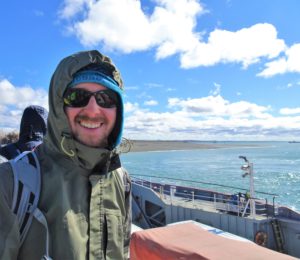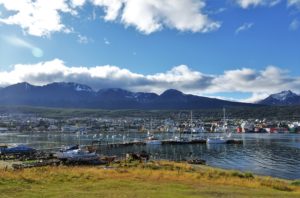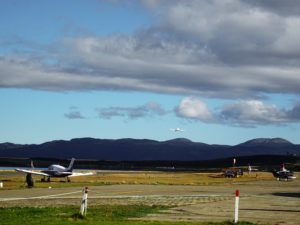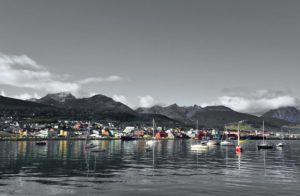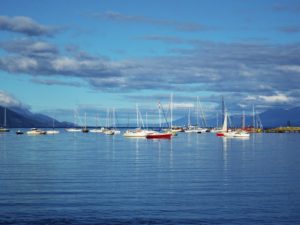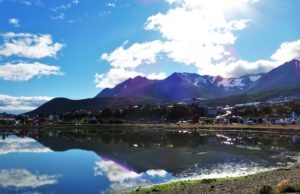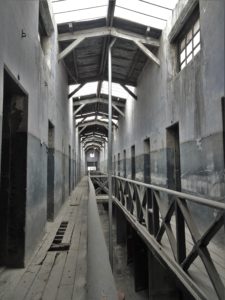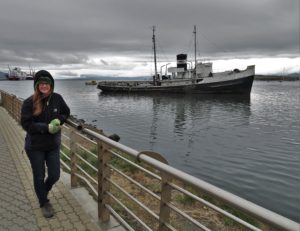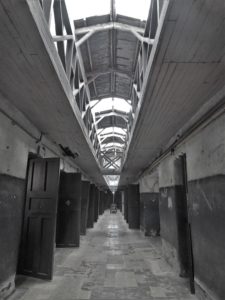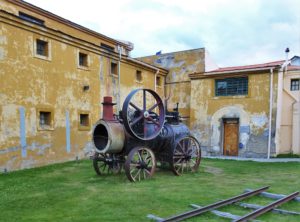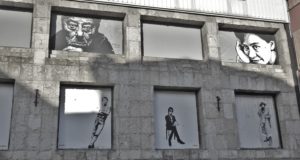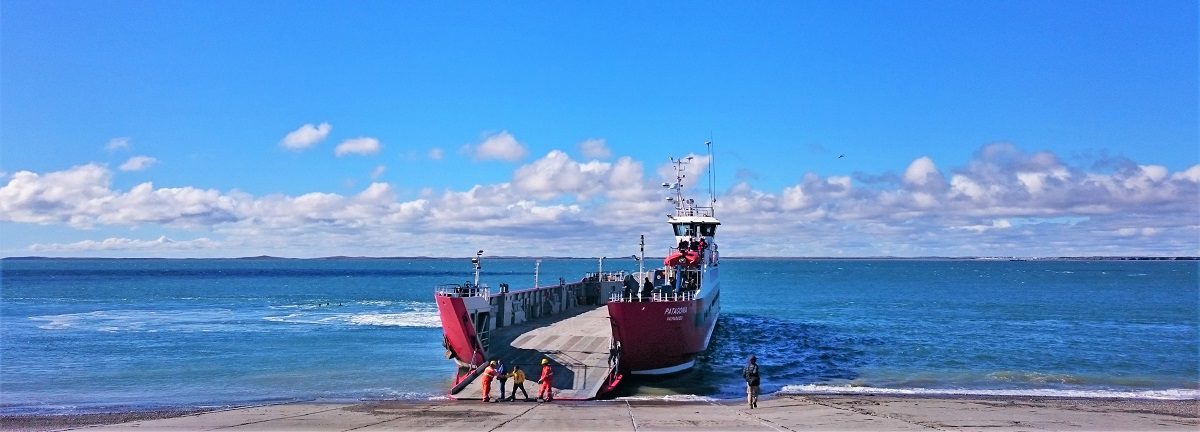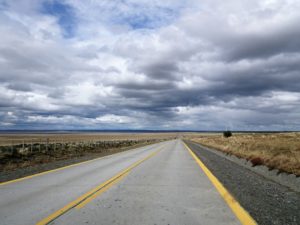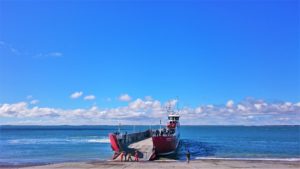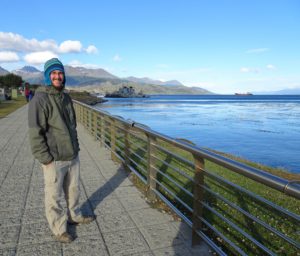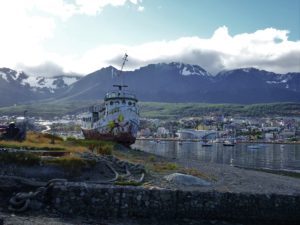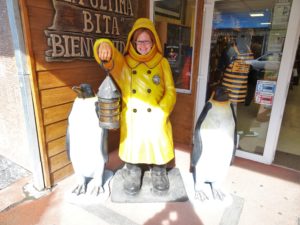After spending five days hiking the W-trek we had one final day with our Wicked van Amanda. It was time to drop her off in Punta Arenas, a small town only a few hours drive south. It was a pleasant, uneventful drive, listening to music and driving down a road signposted as the route of the end of the world! The landscape was huge and open and really did feel like the very edge of the world.
We made it to Punta Arenas and unloaded and cleaned the van. We dropped Amanda back to the Wicked office with mixed feelings, we’d had a fantastic time and loved the freedom the van gave us to explore vast areas of the countryside, but at the same time we were looking forward to having a proper bed and an internet connection! Looking back now, it was definitely one of the highlights of our trip and we’d highly recommend anyone travelling around Chile and Argentina to consider hiring a camper, so much fun and freedom. Here is a short video showing some of the beautiful and often remote places that we camped at during our road trip:
We stayed in a small hostel on the edge of the town in Punta Arenas, it was more like a B&B with an older crowd and not as close to the centre. They’d messed up our reservation which was frustrating but we still got a room so it was better than nothing! I’d not read anything about Punta Arenas before we got there, and was a bit disappointed not to be staying longer as it looked like an interesting colonial town. We had a good night though, treating ourselves to a nice meal out at La Marmita where the dishes were beautifully presented original takes on traditional Chilean food.
We set off on the 9am bus the next day to Ushuaia. This bus journey included a short ferry ride across the Magellan straits. These were our last few hours in Chile and we were sad to be leaving such a fantastic country. We had loved the people, the amazing landscape (and it’s huge variety), the wine, and really appreciated the good infrastructure! Chile is definitely somewhere I want to come back to one day.
We crossed the border into Argentina and the last few hours of the bus journey were through the varied landscape of Tierra del Fuego. This name translates to ‘land of fire’ and was so named by European explorers who saw lots of smoke from the cooking fires of the native tribes people living in this remote and inaccessible region. We drove along the Atlantic coast for a while, our first time seeing that ocean from South America. The bus climbed up and over some mountains and down into Ushuaia, known as the southernmost city in the world. Although only as far south in Latitude as Lincoln is north of the equator, it’s a lot colder here as Antarctica is only 1000km away. We were visiting in summer and the average temperature was 10°C (okay, some might say British summers aren’t that different but there are glaciers and snow here!).
As Antarctica is so close, this city serves as the main tourist departure port for cruises to the continent. This is exactly what we were here for, but you’ll have to wait for more on that in our next post!
That evening we said goodbye to Stella as she headed to Buenos Aires for a week before flying home. We’d had fun travelling in the van with her and hiking the W-trek too. When we’d started on this trip we hadn’t planned to travel with anyone else, but it was a great experience, we met some lovely people and it’s meant we experienced a few things I don’t think we’d have done with just the two of us.
So we had a week to chill out in Ushuaia and get ourselves ready for Antarctica. We were both looking forward to a week catching up with the blog, organising our next travel plans and generally relaxing, especially Chris who had hurt his knee on the trek. Ushuaia is an expensive city, and we opted for an Airbnb apartment so we could really feel at home and cook our own meals to save a bit of cash.
In this week we did make it out of the flat a few times, although there wasn’t a huge amount to do without spending large sums of money. We went to wander around the town and visited a few museums to learn more about the region of Tierra del Fuego and its history. We went to the tiny but really well put together Museo Yamana, featuring exhibits about the original tribes living in the area, and how they were wiped out when European missionaries arrived in the area. We also visited the Museo Fin del Mundo (end of the world museum), which was a bit overpriced and didn’t have much more to say about the area, although it had a few impressive salvaged items from the many ship wrecks along the Beagle Channel. We spent a while at a museum in the old prison which was crammed full with a huge amount of information and varied exhibits on maritime history, history of Ushuaia, the Antarctic and the prison, as well as some strange modern art themed around penguins.
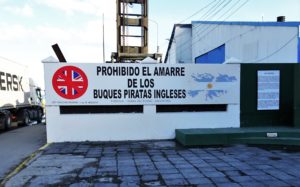
A tough subject but one that has come up a lot in this area is the Falklands, or Islas Malvinas as they are known in Argentina. Ushuaia is the capital of the Las Malvinas region of Argentina, which includes the Falkland Islands. I have to say I knew very little about it before we came to Argentina. We’d seen a few road signs further north in the country saying things along the lines of: the islands belong to Argentina forever. In Ushuaia these signs were more specific and there was one official sign at the port saying English pirate ships would not be welcomed. We’d not experienced any kind of hostility when saying we were from the UK until we got to Ushuaia. Once there people were still nice, but a bit more guarded and less friendly once they knew where we were from. We went to try on some ski jackets for Antarctica and the shop attendant made a few odd comments about me having to try on a jacket in Argentine colours, I got the impression he thought I would be offended to have to wear something associated with the country. I decided not to go into the conversation but just to say I was perfectly happy and loved the colours.
We did enjoy our week in Ushuaia but mainly for the chance it gave us to relax. It wasn’t one of our favourite places, partly due to feeling uncomfortable about our country of origin, but in all the town just never felt very welcoming. It is also very expensive due to its remote location, and doesn’t offer much to do for more than a day or so for those who can’t afford boat cruises or car hire to get out to the countryside.
At the end of our chilled out week we had managed to time things just right to meet up with another travelling friend who we’d last seen at New Year, it was great to catch up with Louise, eat lunch and swap tips as we were doing similar routes in the opposite direction. We said goodbye again, all packed up and staggering under the extra weight of our rented cold weather clothing, we had a lift to the port from our wonderful Airbnb hostess and finally checked in to our next adventure, Antarctica!
